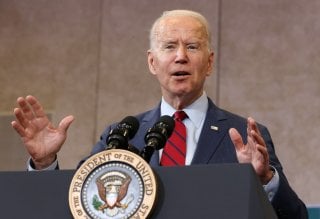Welcome to the Great Housing Crisis of 2021
U.S. housing prices today are higher than they were at their 2006 peak.
In the run-up to the 2006 U.S. housing bust, Federal Reserve Governor Lyle Gramley famously warned Alan Greenspan that poor lending practices could lead to a housing bubble that might pose real risks to the U.S. financial system. His advice fell on Greenspan’s deaf ears. The rest as it is said is history. Led by the housing market, the United States experienced its worst economic recession and its deepest financial market crisis in the postwar period.
Today, Eric Rosengren, the president of the Boston Fed is warning about excessive exuberance in the U.S. housing market and is cautioning that the U.S. economy can ill-afford another boom-bust economic cycle. One has to hope that this time around, Fed Chair Jerome Powell will heed Rosengren’s warning. Maybe then he will take timely action to reduce the chances that we have anything like a repeat of the 2006 housing market bust.
Among the factors giving people like Rosengren pause is the unusually rapid pace at which U.S. housing prices now are increasing. According to the widely respected Case-Shiller index, at the national level, U.S. housing prices are now increasing by 15 percent a year or at their fastest pace in the past thirty years. Meanwhile, in May 2021, the median existing-home price sale exceeded $350,000 representing a 24 percent increase over the previous year.
It also has to be of concern that even adjusted for inflation, U.S. housing prices today are higher than they were at their 2006 peak. With the speculative activity in the housing market that now is very much in evidence, there is every prospect that by year-end we will well exceed the 2006 bubble’s level.
To be sure, since 2006 there have been substantial improvements in lending practices in the U.S. housing market. No longer do we have large-scale sub-prime lending or the infamous NINJA (No income, no job, no asset) loans. In addition, in the wake of the Great Economic Recession, serious efforts were taken to strengthen the balance sheet position of the banks. That has made them more resilient to weather a housing market reversal.
Before taking comfort in these welcome financial system improvements, it is well to recall that unlike in 2006, today’s excesses in the U.S. housing market are not occurring in isolation. Rather they are occurring in the context of a so-called global everything asset price and credit market bubble that has been fueled by the highly aggressive central bank bond-buying of the world’s major central banks.
One indication of the “global everything” bubble is today’s highly stretched U.S. equity valuations that have been experienced only once before in the past one hundred years. Another example is the unusually low-interest rates at which even the riskiest borrowers in both the advanced and emerging market economies can borrow.
All of this makes it difficult to understand why at a time that the U.S. economy is recovering so strongly and the housing market seems to be on fire, the Fed is continuing to buy $120 billion a month in U.S. Treasury Bonds and Mortgage-Backed Securities. By doing so, not only is the Fed further inflating the U.S. housing market bubble but it is also inflating the global everything bubble. That has to be heightening the risk of a hard economic and financial market landing when the Fed is forced to raise interest rates to cool an overheated U.S. economy.
If a hard economic landing is to be avoided, then one must hope that the Fed will heed the warnings being issued by some of its own governors of the excessive froth developing in the U.S. housing market. Maybe then the Fed might stop buying Mortgage-Backed Securities which are now only adding fuel to the U.S. housing market bubble.
Desmond Lachman is a senior fellow at the American Enterprise Institute. He was formerly a deputy director in the International Monetary Fund’s Policy Development and Review Department and the chief emerging market economic strategist at Salomon Smith Barney.
Image: Reuters

